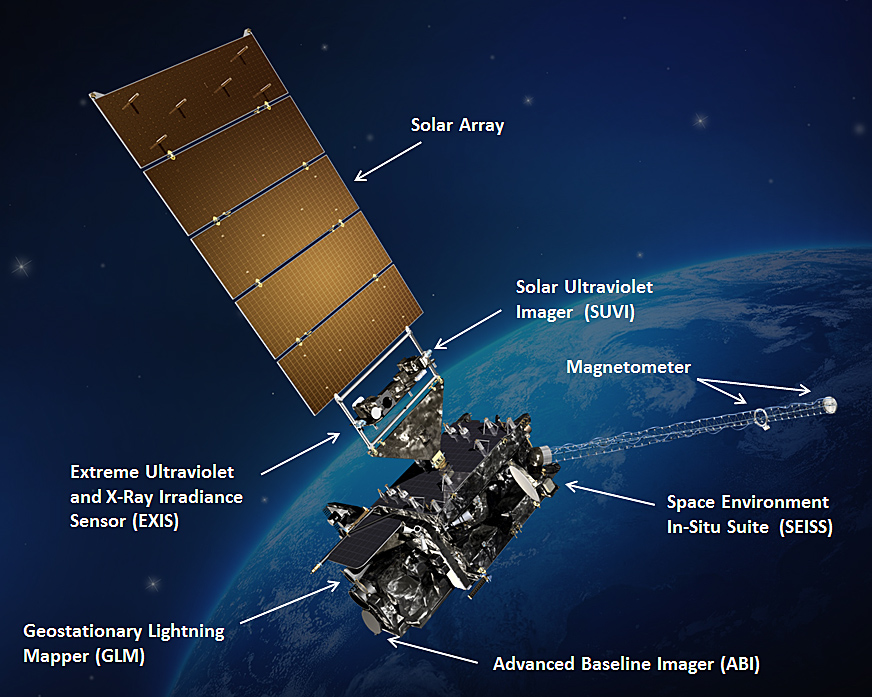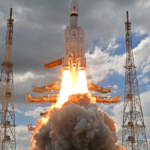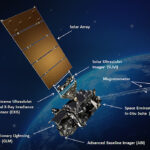
The satellite industry is entering an exciting new phase with the introduction of quantum computing. New satellite technology is gaining momentum. Quantum computing is a special type of computing that uses the rules of quantum mechanics to store and process information. It has the potential to transform the way we handle data and solve complex problems.
In the new satellite technology, quantum computing can be incredibly useful. It can help process and analyze the massive amounts of data collected from satellites much faster and with greater accuracy. This means we can make decisions more quickly and make better use of satellite data.
Moreover, quantum computing can improve satellite communication systems. It can make data transfer much faster and ensure stronger security for sensitive information. Similar information is available on eblogsindia.com.
The possibilities of quantum computing in new satellite technology are vast. For example, it can enhance satellite navigation and positioning systems, making them even more reliable and precise.
It can also lead to the development of advanced satellite imaging technologies, giving us a clearer understanding of our environment and the mysteries of the universe. With quantum computing, the future of satellite technology looks brighter than ever!
New Satellite Technology In The World
The satellite business will probably be among the first to adopt and benefit from the technology as it develops.
Topics covered:
| Utilizing Automation and Robotics in Future Satellite Technologies |
| Small Satellites |
| Satellite IoT |
| Earth Observation: Monitoring Our Planet Like Never Before |
| Beyond Earth’s Borders: Deep Space Exploration and Interplanetary Communication |
| Artificial Intelligence in Satellite Tech |
1. Utilizing Automation And Robotics
In order to keep up with the growing demands of modern communication and worldwide coverage, new satellite technology is always developing. Two of the most promising technologies that could be used in new satellite technology in the future are automation and robots.
Automation is the process of replacing human labor with machinery and technology. Automation could lessen the demand for manual labor in the production and maintenance phases of satellite technology. This might therefore result in significant cost savings, improved effectiveness, and a lower chance of human error. Additionally, automation could be utilized to enhance satellite communication, giving the satellite and its operations more control.
The employment of robots, or machines that can be taught to behave autonomously, to carry out a range of activities, is known as robotics. Robotics could be used to build more complicated and sophisticated satellites, which could deliver more precise data. Robotics could be utilized to automate the launch procedure, making satellite launches more productive and affordable.
New satellite technologies that incorporate automation and robots have the potential to completely transform the sector. Processes for production and maintenance could become more effective and economical with automation and robotics. Additionally, it might result in enhanced satellite connectivity and more accurate data. Future satellite technologies that incorporate automation and robotics may ultimately revolutionize the sector.
2. Small Satellites
Gone are the days when launching satellites meant sending massive payloads into orbit. The advent of miniaturization has ushered in an era of new satellite technology, where small satellites, often referred to as CubeSats and SmallSats, are making waves.
These miniaturized satellites, often no larger than shoeboxes, are proving to be cost-effective alternatives for various missions, including Earth observation, scientific research, and communication.
The miniaturization trend has numerous advantages. It lowers the barriers to entry for new players in the space industry, encouraging innovation and experimentation. Additionally, it enables constellations of satellites, working in tandem to provide comprehensive coverage for various applications, ranging from global internet coverage to weather monitoring.
3. Satellite IoT
One of the most ambitious and transformative applications of new satellite technology is the concept of satellite internet constellations. Spearheaded by companies like SpaceX with its Starlink project, these constellations aim to provide high-speed, low-latency internet access to remote and underserved areas across the globe.
By placing thousands of small satellites in low Earth orbit (LEO), these networks can bridge the digital divide and offer connectivity to previously unreachable regions. NAVIC is one of the latest technologies you can make use of.
The potential impact of satellite internet constellations is immense. They could revolutionize education, healthcare, and commerce in remote areas, enabling online learning, telemedicine, and e-commerce to flourish. However, challenges such as orbital debris and regulatory hurdles need to be addressed to ensure the sustainability and success of these projects.
4. Earth Observation: Monitoring Our Planet Like Never Before
Satellites have played a pivotal role in understanding our planet’s climate, weather patterns, and natural phenomena. With advancements in sensor technology, satellites are now equipped with highly sophisticated instruments capable of providing unprecedented levels of data and insights.
New satellite technologies enable real-time monitoring of natural disasters, deforestation, urban growth, and more. This data not only aids in disaster response and mitigation but also informs policy decisions related to climate change and sustainable development.
High-resolution imagery and advanced data analytics are empowering scientists, governments, and organizations to work together to tackle global challenges.
5. Beyond Earth’s Borders:
While satellite technology has primarily focused on Earth-centered applications, it’s also making waves in deep space exploration. Missions like NASA’s Voyager probes and the Mars rovers rely on satellite communication to send data and images back to Earth.
As technology advances, we’re on the cusp of new horizons in interplanetary communication, enabling us to explore and understand the cosmos like never before.
The development of advanced propulsion systems and communication protocols is crucial for enabling future deep space missions. These technologies not only expand our knowledge of the universe but also hold the potential for mining asteroids, establishing settlements on other planets, and even facilitating interstellar travel in the distant future.
6. Artificial Intelligence In Satellite Tech
Satellites gather lots of data, but handling and analyzing it is tricky. This is where Machine Learning (ML) and AI come in. They help analyze data from Earth observation, navigation systems, and remote sensing.
AI on the cloud leads to “Ground-Station-as-a-Service” solutions. Ground stations also use AI to control satellites, like changing their path or using resources better. In space, AI predicts orbits and tracks satellites to manage space traffic.
Also, AI helps sensors on satellites process data on their own before sending it. AI even helps satellites move around on their own, navigate, fix communication errors, dock with others, and work together in groups.
Final Take Away
The new satellite technology is evolving quickly, with new ideas emerging rapidly. Alongside clever subsystems and services in space, satellites are adopting even more advanced tech, as we found in our research on satellite trends. Satellite avionics are also getting smarter and tougher against radiation.
These intelligent avionic systems keep an eye on equipment health, guide with precision, and control satellites accurately. Plus, thanks to all these satellite innovations, space tourism is becoming a reality. All these fresh technologies and services don’t just let us delve into deep space; they also enhance life back on Earth.






